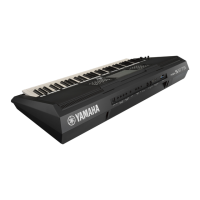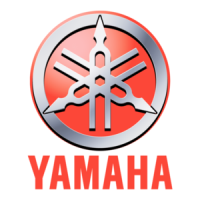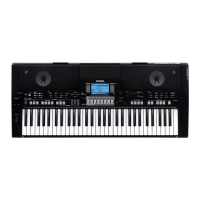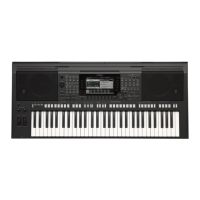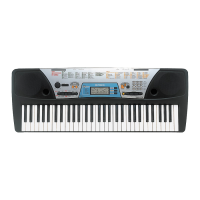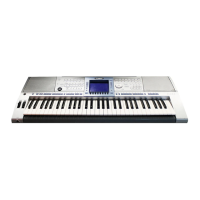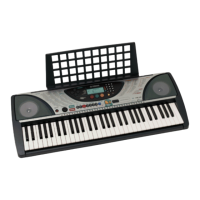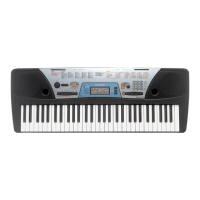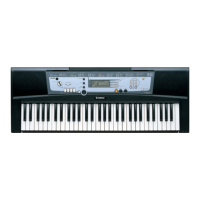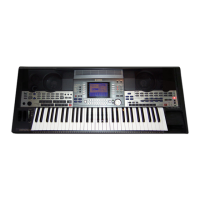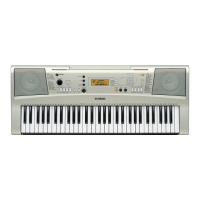PSR-S970/S770 Reference Manual 95
8
Microphone/Guitar Input
OVERVIEW Tab Parameters
HARMONY ASSIGN
For detailed information on each parameter, refer to the “Vocal Harmony Parameter List” in the Data List
on the website.
[A] MODE Determines the mode of the Vocal Harmony effect: Chordal, Vocoder
or Vocoder-Mono. Chordal is for conventional vocal harmonies, while
Vocoder and Vocoder-Mono are for Vocoder effects. (Vocoder-Mono is
for single-note melodies.) When Vocoder or Vocoder-Mono is selected,
the Chordal Type parameter below is not available.
[B]/[C] CHORDAL
TYPE
Determines the particular notes and voicings used for generating the
vocal harmonies. The harmony and lead notes are also shown as nota-
tion in the display. For a list of the Chordal Types, refer to the “Vocal
Harmony Parameter List” in the Data List on the website.
[1 ] BALANCE Lets you set the balance between the lead vocal (your own voice) and
Vocal Harmony. Raising this value increases the volume of the Vocal
Harmony and decreases that of the lead vocal. When this is set to
L<H63 (L: Lead Vocal, H: Vocal Harmony), only the Vocal Harmony is
output; when it is set to L63>H, only the lead vocal is output.
[3 ]–
[6 ]
VOCAL
EFFECT
Determines the Vocal Effect type and the amount of the effect applied
to the lead and harmony vocal sounds.
[3 ]
–[4 ]
TYPE
Determines the specific Vocal Effect type applied to the lead and har-
mony vocal sounds. A wide range of reverb, delay, modulation, distor-
tion and other special effects are available. For a list of the effect types,
refer to the “Vocal Harmony Parameter List” in the Data List on the
website.
[5 ]
LEAD
Determines the amount of Vocal Effect that is applied to the lead vocal
sound.
[6 ]
HARMONY
Determines the amount of Vocal Effect that is applied to the harmony
vocal sound.
[7 ] REVERB Determines the amount of reverb applied to the overall Vocal Harmony
sound, both lead and harmony.
[8 ] CHORUS Determines the amount of chorus effect applied to the overall Vocal
Harmony sound, both lead and harmony.
[1 ]/
[2 ]
TRANS
(TRANSPOSE)
MODE
Determines the amount by which the harmony parts are transposed. A
setting of “0” results in no transposition, while the “Auto” setting
results in automatic transposition. When the mode is set to Vocoder or
Vocoder-Mono, this parameter is available.
Settings: 0, Auto, -3 – +3
[3 ]/
[4 ]
SESSION
TABLE
Determines how the harmonies will be voiced, or what type of chord
will be used in creating the harmonies, according to different musical
styles. This parameter is available only when the mode is set to Chordal
and the type is set to something other than ScaleDiatonic or Parallel.
Settings: Normal, Simple, R&R, UrbanA, UrbanB, Blues7, UrbanC
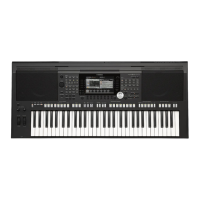
